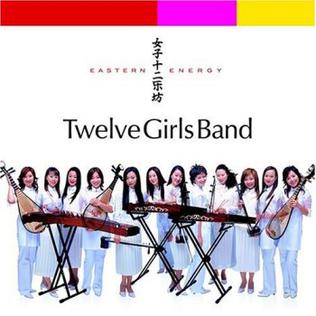
The Violin Concerto in D major, Op. 61, was written by Ludwig van Beethoven in 1806. Its first performance by Franz Clement was unsuccessful and for some decades the work languished in obscurity, until revived in 1844 by the then 12-year-old violinist Joseph Joachim with the orchestra of the London Philharmonic Society conducted by Felix Mendelssohn. Joachim would later claim it to be the "greatest" German violin concerto. Since then it has become one of the best-known and regularly performed violin concertos.

Wolfgang Amadeus Mozart completed his Symphony No. 41 in C major, K. 551, on 10 August 1788. The longest and last symphony that he composed, it is regarded by many critics as among the greatest symphonies in classical music. The work is nicknamed the Jupiter Symphony, probably coined by the impresario Johann Peter Salomon.

Symphony No. 40 in G minor, K. 550 was written by Wolfgang Amadeus Mozart in 1788. It is sometimes referred to as the "Great G minor symphony", to distinguish it from the "Little G minor symphony", No. 25. The two are the only extant minor key among Mozart's symphonies.

Ludwig van Beethoven's Symphony No. 1 in C major, Op. 21, was dedicated to Baron Gottfried van Swieten, an early patron of the composer. The piece was published in 1801 by Hoffmeister & Kühnel of Leipzig. It is not known exactly when Beethoven finished writing this work, but sketches of the finale were found to be from 1795.
C minor is a minor scale based on C, consisting of the pitches C, D, E♭, F, G, A♭, and B♭. Its key signature consists of three flats. Its relative major is E♭ major and its parallel major is C major.
D major is a major scale based on D, consisting of the pitches D, E, F♯, G, A, B, and C♯. Its key signature has two sharps. The D major scale is:
A major is a major scale based on A, with the pitches A, B, C♯, D, E, F♯, and G♯. Its key signature has three sharps. Its relative minor is F-sharp minor and its parallel minor is A minor. The key of A major is the only key where the Neapolitan sixth chord on requires both a flat and a natural accidental.
G minor is a minor scale based on G, consisting of the pitches G, A, B♭, C, D, E♭, and F. Its key signature has two flats. Its relative major is B-flat major and its parallel major is G major.
E minor is a minor scale based on E, consisting of the pitches E, F♯, G, A, B, C, and D. Its key signature has one sharp, on the F. Its relative major is G major and its parallel major is E major.
B minor is a minor scale based on B, consisting of the pitches B, C♯, D, E, F♯, G, and A. Its key signature has two sharps. Its relative major is D major and its parallel major is B major.

Eastern Energy is an album by Twelve Girls Band. It consists of fourteen songs in a sort of modernized Chinese form on one audio CD and a DVD featuring the video for the song "Freedom" and other material. It was released on Platia 72438-64515-0-7 in 2004. This album is also considered as the debut album in USA. It debuted at #62 on the Billboard 200.
Hans Graf is an Austrian conductor.
The Symphony No. 14 in C major, the so-called "Jena Symphony" by Friedrich Witt, is a symphony that was at one time attributed to Ludwig van Beethoven. The symphony was discovered by Fritz Stein in 1909 in the archives of a concert society in Jena, from which it derived its name. Stein believed it to be the work of Beethoven and it was so published by Breitkopf und Härtel in 1911. It is now known that the piece was the work of Witt.

A Journey Through Fairyland is a 1985 Japanese animated film by Sanrio, the company which animated Unico, The Sea Prince and the Fire Child and Ringing Bell, though this story is less sought out as a rarity among Sanrio cult classic collectors. It was Sanrio's final feature-length anime film until 2007. It was brought to America in 1989 through a company called Celebrity Home Entertainment. Unlike previous works, this one mainly focuses on music more than plot, prompting it to be compared with Disney's older work Fantasia. The one original piece is "My Name is Florence," which contains lyrics and is sung in the film; all other songs on the soundtrack are works of classical composition, written by Beethoven and other similarly noteworthy composers.

Piotr Anderszewski is a Polish pianist and composer.

The 50 Greatest Pieces of Classical Music is a compilation of classical works recorded by the London Philharmonic Orchestra with conductor David Parry. Recorded at Abbey Road Studios, Royal Festival Hall and Henry Wood Hall in London, the compilation was released in digital formats in November, 2009 and as a 4-CD set in 2011. The 50 Greatest Pieces of Classical Music has sold over 200,000 copies and spent over three days as one of the top 10 classical albums on iTunes.

Hooked on Classics is a classical crossover album recorded by the Royal Philharmonic Orchestra conducted by Louis Clark, released in 1981 by K-tel and distributed by RCA Records, part of the Hooked on Classics series. It was produced by Jeff Jarratt and Don Reedman.









